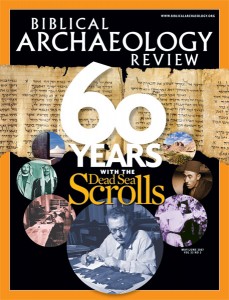
As the United Nations was deliberating over a resolution that would partition Palestine and recommend the establishment of a Jewish state, Hebrew University archaeologist Eleazar L. Sukenik, was pondering the risks of traveling to Bethlehem to see an Arab antiquities dealer who had for sale some ancient leather scrolls. Hostility between Jews and Arabs in the Holy City was intense, threatening to become violent at the passage of the UN resolution, and Bethlehem was in Arab territory.
I had planned to meet my Armenian friend [Nashri Ohan] again on November 28 [1947] and go with him to the Arab antiquities dealer [Feidi el-Alami]. But my wife had been particularly adamant against my going, in view of the danger. And so I had reluctantly to call off the meeting. Later in the day, my son, Yigael [Yadin], came in from Tel-Aviv and was as excited as I was when I told him of the scrolls. But he, too, indicated, though not as vehemently as his mother, that perhaps it was not too wise. He was only with me for a short while as he had to return to his headquarters in Tel-Aviv.
Later in the evening I listened to the radio and heard that the United Nations, which had been expected to vote on that day, had postponed its decision. Here I thought was my chance. For I believed the Arab attacks would begin immediately after the vote, and if I were to go to Bethlehem it would have to be before. I therefore resolved to make the journey the next morning, the 29th, and this time decided not to tell anyone.
Already a library member? Log in here.
Institution user? Log in with your IP address.

